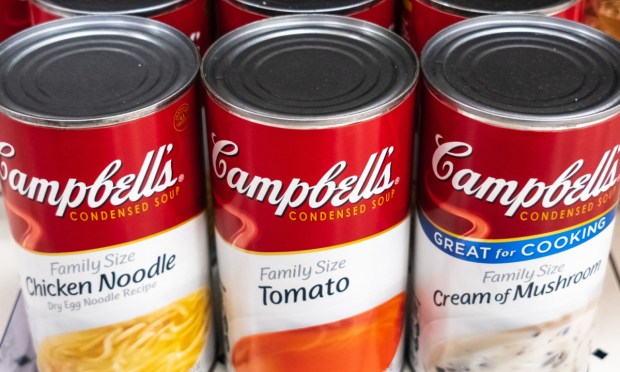Campbell’s Sees Consumers Sacrificing Ready-to-Eat Meals as Inflation Continues

As this period of inflation stretches on, Campbell’s is seeing budget-constrained consumers beginning to give up the convenience of prepared meals in favor of more affordable home cooking options.
The Campbell Soup Company shared Thursday (Aug. 31), on a call with analysts discussing its fourth-quarter fiscal 2023 financial results, that it has seen an increase in sales of ingredients for easy meals and a decrease in its ready-to-eat meals.
“[We have seen] a growing shift to more value-driven stretchable meals, which has had a mixed effect on our business,” CEO Mark Clouse said. “It has undoubtedly been a positive driver on categories like pasta sauce and condensed cooking soups, as well as broth, while also adding pressure on categories like ready-to-eat soup. We expect this behavior to subside as inflation continues to moderate.”
Clouse later clarified that items that enable these shoppers to “feed a greater number of family members” or to provide themselves with more servings have been performing better than single-serve products or those that yield relatively few meals.
This trend marks a slight shift from the company’s observation earlier this year that consumers were looking for options that minimized the time they would spend at home cooking.
The observation is also a considerable departure from the increased demand for ready-to-eat meals that PYMNTS has observed, with consumers choosing these over more expensive restaurant meal options.
Findings from the study , “Connected Dining: Ready-to-Eat Meals Are Eating Restaurants’ Lunch,” for which we surveyed more than 2,300 U.S. consumers in April, revealed that the majority of consumers (57%) now purchase ready-to-eat meals at least once a month, and 28% do so once a week or more. Plus, half of these ready-to-eat customers reported doing so because these meals have become cheaper relative to other alternatives.
Notably, Campbell’s is also seeing consumers’ baskets shrink as they cut down on nonessential items, shopping with a short-term focus on what they need in the near future.
“Consumers began prioritizing categories based on more immediate needs and value, leading to fewer categories in the shopper basket,” Clouse observed. “This pattern of behavior resulted in a real focus on seasonal priorities and has obviously created a headwind on categories like soup in the summer.”
Research from the study “Consumer Inflation Sentiment Report: Consumers Cut Back by Trading Down,” which draws from a survey of more than 2,000 U.S. consumers in April, revealed that 57% report having cut down on nonessential grocery spending.
That said, consumers are still leaving at least a little room in their budgets for snacks and treats, even when they face significant financial pressures, according to data from PYMNTS’ recent study “New Reality Check: The Paycheck-to-Paycheck Report – The Nonessential Spending Deep Dive Edition,” created in collaboration with LendingClub, which is based on a July survey of more than 3,400 U.S. consumers. The study finds that 74% of all consumers buy “nice-to-have” items at the grocery store at least sometimes, including 59% of consumers living paycheck to paycheck with issues paying bills.

